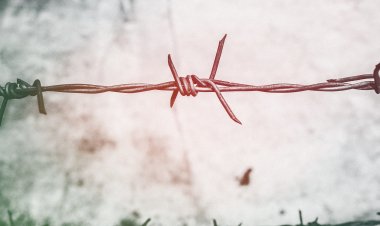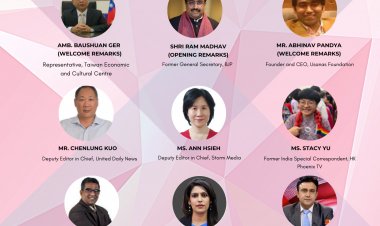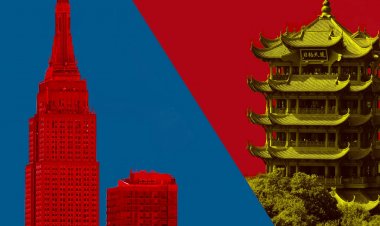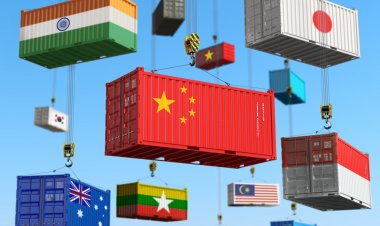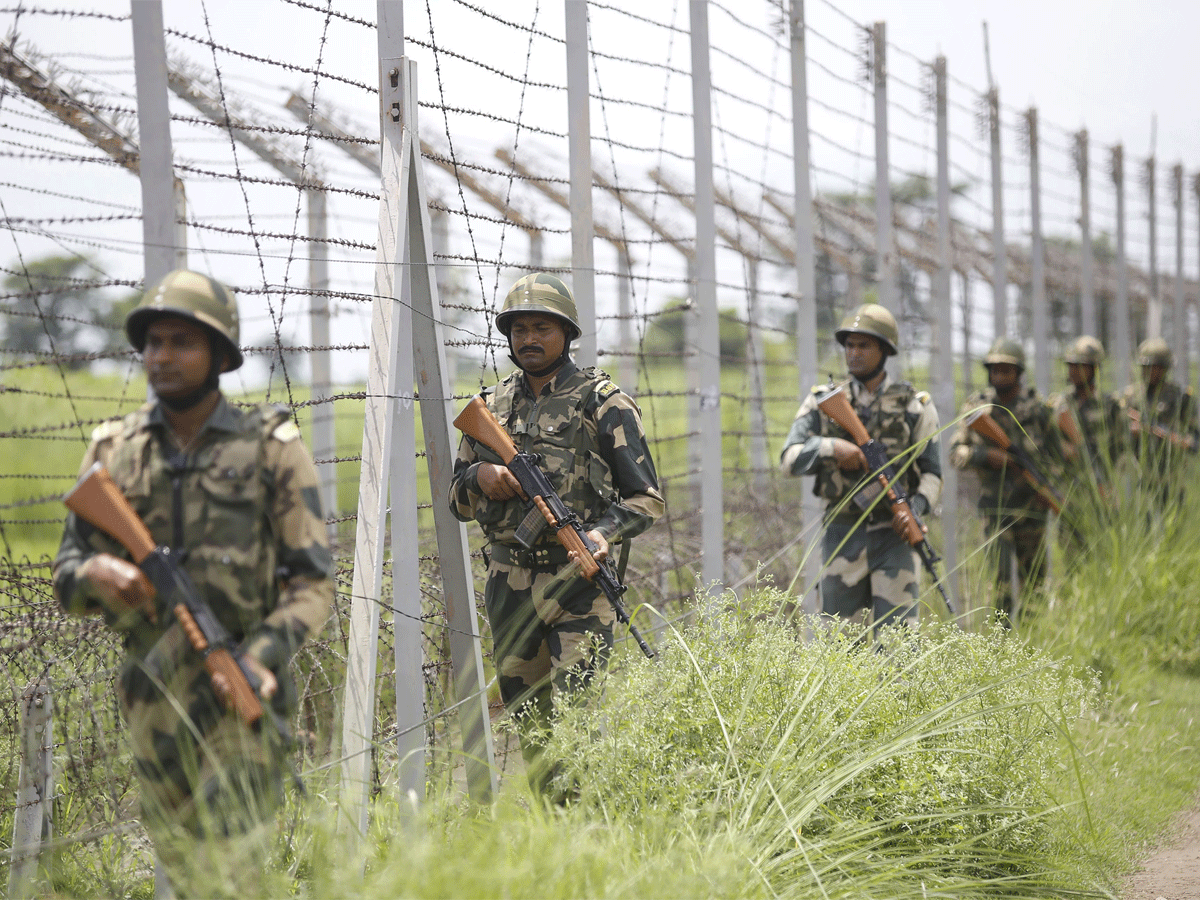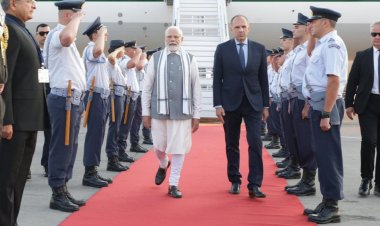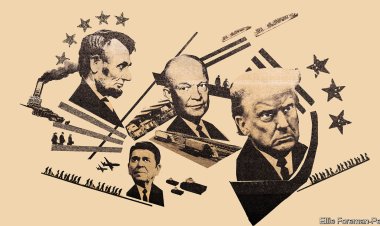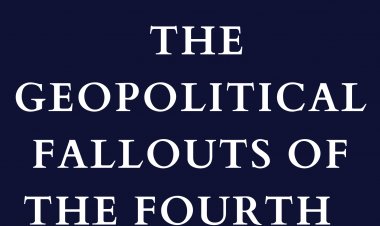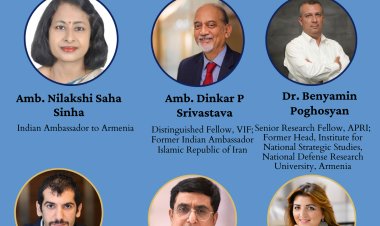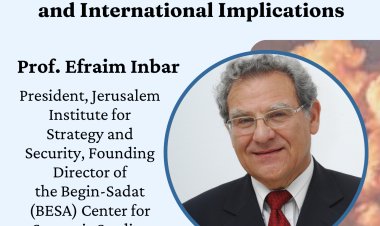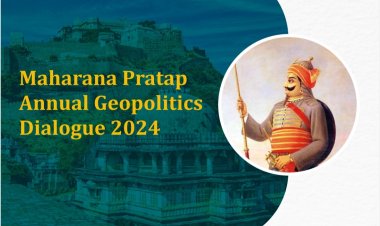Revival of Tibet on the Global Geopolitical Landscape: US Congress Passes Tibet Policy and Support Act 2020
After the US signals a proactive and belligerent approach on Tibet, the expectations from New Delhi are high. India needs to get rid of its strategic dilemmas and awaken to its humanitarian and civilizational responsibility on Tibet.
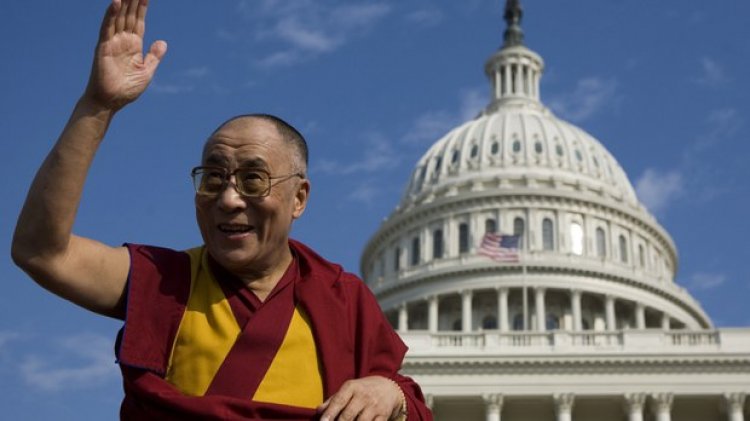
Analysis
By Abhinav Pandya
The idea of 'resurrection' may be mere mythology in religion; however, it serves a purpose far more realistic in politics and diplomacy. The question of Tibet's independence stands resurrected in its full glory and steam with the US Congress' passage of Tibet Policy and Support Act (TPSA), 2020, which will soon become a law after the White House clears it. Its resurrection goes beyond symbolism and brings with it far more profound geostrategic implications and repercussions. Before delving deeper into them with a critical lens, it is worthwhile to go through its fundamentals.
TPSA 2020, introduced by Republican Marco Rubio and Democrat Jim McGovern is a stark reminder of the firm entrenchment of bipartisan consensus on China being the most potent existential threat in the US political and strategic quarters. The act, soon to become a law, officially allows the US government to "oppose any effort by the Government of the People's Republic of China to select, educate, and venerate Tibetan Buddhist religious leaders in a manner inconsistent with Tibetan Buddhism in which the succession or identification of Tibetan Buddhist Lamas including the Dalai Lama, should occur without interference, in a manner consistent with Tibetan Buddhists' beliefs." It allows the US Government to sanction those Chinese officials who attempt to interfere with the next Dalai Lama selection. The act also stipulates that the Chinese government will be allowed to open new consulates in the US only on the condition of PRC allowing the US to open a consulate in Lhasa, the capital of Tibet Autonomous Region (TAR). Besides, the act sanctions several financial appropriations for Tibet and Tibet-related issues.
Further, in related developments, Congressman Scott Perry, in his letter to the US President Trump, demanded Tibet to be recognized as a separate and independent country. Prior to this, Mike Pompeo appointed Assistant Secretary Robert A. Destro of the Bureau of Democracy, Human Rights and Labor to serve as a special coordinator for Tibet, an office lying vacant since Jan 2017. In that capacity, Mr Destro is responsible for promoting "substantive dialogue" between PRC and Dalai Lama, coordinating the US projects and policies for Tibet, and sustaining efforts to protect Tibet's cultural and religious identity and safeguard human rights in the region.
Tibet Comes to Life: Symbolism or Beyond That
Until recently, the Tibet issue was fast losing its charm in the world of geopolitics and intelligence. US and India, the two countries with significant strategic stakes in the Tibet issue, over the years, had lost interest in Tibet, though continued their connections with Tibetan exiles, activists, and the government in, more or less, in a perfunctory manner. Post 9/11, the US was primarily preoccupied with transnational jihadi terrorism and the Middle Eastern quagmires, not to mention the desire to befriend China, based on a hubristic understanding of CCP and its game-plan.
Then came 2020, upsetting the world order and disturbing the three-decades-long slumber of India and the West. Thanks to Trump, the US-China trade wars and his principled stand against Chinese practices of intellectual theft and corporate espionage had already set in the framework in which the revisionist intent of CCP could not stay hidden for long. However, the pandemic brought the US-China rivalry to the forefront. Beijing's manipulative manoeuvres with the esteemed international institutions, post-COVID narrative domination with underhand influence and information operations, and its wolf-warriors bullying western democracies for questioning China's role in the origin and the spread of the pandemic laid bare its unrestricted warfare aimed at global hegemony.
Nevertheless, despite still being entangled in the Middle East's affairs, with the war on terror, Afghanistan, and the Russian hangover, Americans have finally woken up and arrived at a bipartisan consensus on the Chinese threat. John Ratcliffe's (Director of National Intelligence), aptly summarising the American sentiment, categorically says in his WSJ article, "China is a national security threat no. 1: Resisting Beijing's attempt to dominate and reshape the world is the challenge of our generation."
Likewise, New Delhi remained busy with the shenanigans and narrative-traps of ISI, entirely unmindful of a vicious threat on its eastern border. Also, the very fact that China was actively and passively supporting Pakistan's proxy jihadists in Kashmir, and was unmistakably complicit in shielding global terrorists like Masood Azhar, continued to evade Delhi strategic sub-conscious. Mandarins of South Block, better known for their literary skills in prose and poetry than any substantial diplomatic feats, never ceased to marvel at their accomplishments in getting Beijing to sign a never-ending series of meaningless boundary protocols and confidence-building measures. The dominant opinion, among the Indian strategic quarters, as late as April 2020, was that robust economic ties with Beijing could fix everything. Such foolhardy diplomatic theories continued despite China being always consistent with bullying statecraft an expansionist intent.
Even the Doklam fiasco failed to rupture the cognitive deadlock on China in India's strategic community. Finally, the Galwan face-off has changed everything, and it seems, notwithstanding outstanding reservations, that Delhi realizes that China is its territorial threat number one. Aptly summarizing the Indian sentiment, Minister of External Affairs ( MEA) S. Jaishankar said, "We are probably today at the most difficult phase of our relationship with China in the last 30-40 years, maybe even more…….. Today, how to get the relationship back on track is a big issue."
With the onset of cold war 2.0, the US intelligence establishment is back to its time-tested theories and tactics of working on the fault-lines and pressure points. Tibet is one such pressure point where it pinches and pains the CCP, hard. However, for all its activism and confrontationist approach, it is unlikely that the US will support Tibet's independence. Reportedly, for the policy wonks in DC, it is not pragmatic; an extreme measure which the US cannot afford, at this stage. Hence, once again, Tibet is likely to get reduced to an ad-hoc and random leverage-seeking tool, relevant for signalling purposes. However, if that is the case, then DC repeats the old follies and refuses to think differently to contain a revisionist hegemon, determined to upset the rules-based world order.
While determining its policy outlook on Tibet resistance the west has to be mindful that the Tibet resistance symbolizes what the global democracies and the US, particularly, stand for, i.e., the freedom of religion and expression, respect for diversity, human rights, and democratic values. Hence, it is also an ideological front for democracies against CCP's dictatorial and surveillance regime driven by an extremist ideology and hegemonic aspirations.
The India Factor
Another key player on the Tibetan front is India. PM Nehru offered asylum to HH Dalai Lama and his followers when CCP massacred thousands of unarmed monks and civilians in Tibet. Since then, Dalai Lama is an extremist and separatist for CCP and a major thorn in India-China ties. His meeting with the Indian Prime Minister and visits to Arunachal Pradesh, India's North-Eastern state claimed by China and home to the famous Tawang monastery, always raises eyebrows in Beijing.
Interestingly, the reference to India-China tensions and the consequent war (1962) also merits attention because the foundations of CCP's diplomacy with "Chinese Characteristics," i.e., deception and duplicity, were laid in the Chinese diplomatic effort of the 1950s. Declassified CIA documents give a detailed account of how Premier Chou en Lai betrayed PM Nehru through a strategy of persuasion and coercion. In a succinct encapsulation of the Chinese diplomatic effort, the report calls it "a five-year masterpiece of guile, executed and probably planned in large part by Chou en Lai." Further, it says, "Chou played on Nehru's Asian, anti-imperialist mental attitude, his proclivity to temporize, and his sincere desire for an amicable Sino-Indian relationship." Despite India going overboard in showing friendly gestures through the Panchsheel agreement, supporting China in the UN on the Korean war issue, and the monologues of 'Hindi-Chini Bhai Bhai'(India-China brotherhood), China always perceived India as a long-term threat to its political and military ambitions. The 1962 war, in the words of Chinese PM Liao Shao(as said to the Swedish Ambassador), "taught India a lesson." Nehru's towering personality as a leading Asian leader disturbed Beijing, and they intended to damage his prestige and credibility.
On the issue of Tibet, in contrast to the US' approach, which was purely guided by cold strategic considerations, India's support was strongly driven by humanitarian concerns and civilizational ties and was practically confined to asylum and sympathy; for fear of further straining India-China relations. Since the 1950s, India's strategic establishment has been uncomfortable with Dalai Lama's incursions into political and non-religious domains. India has not accorded him the status of a nation-head. It has been more or less steadfast in its commitment to "One China Policy." However, China has never shown even an iota of commitment to the "One India" policy. From India's North East to Kashmir, China's subversion is blatantly evident. Hence, it is high time India realized this and shed its strategic dilemmas on Tibet. New Delhi has to be proactive in its support for Tibet if it wants to be seen as an equal to China.
Tibetan exiles in India expect New Delhi to be more proactive on the Tibetan issue. India's strategic location makes it an inevitable and most critical player if any covert or overt military or diplomatic effort has to be planned to free Tibet from China. Expectations from the Modi government are high because of its firm and assertive approach in national security and foreign policy matters and his interest in Buddhism as India's civilizational link with East Asia. It is pertinent to mention that NSA Ajit Doval's brain-child, Vivekananda International Foundation, India's most influential think tank in terms of its impact on policy planning and implementation, has been highly active organizing seminars and conferences on Buddhism's role in India's soft power.
However, there is also a sense of disappointment and despair among the young generation of Tibetan exiles and activists. Tenzin Tsundue, Tibetan activist, poet, and author, told this analyst that, "India's basic approach since Nehru has been accommodative and it has not yet changed. But China has always been dubious. Whenever Chinese leadership visited India, the PLA did incursions into the Indian Territory. Even during Galwan, Delhi was taking loans from China. The Indian government continues to be misled by some corporates who have stakes in China."
Further, he suggested, "India should put an end to its 'One China' policy. Military confrontation is not in sight; economically, China is superior, diplomatically they have more clout; the only way India can put pressure on China is through supporting Tibet, which is their weak point. India must begin with changing the nomenclature and call it an India-Tibet border instead of India-China border, and then recognize Tibet as an occupied country and HH Dalai Lama as the spiritual and political leader of Tibet."
However, among India's foreign policy quarters and intelligence circles, there is still a sense of reluctance in actively associating with the Tibetan cause. Even in the post-Galwan phase, it appears that India's effort is aimed at obtaining a semblance of normalcy with China. An intelligence veteran, associated with Tibet affairs for decades, told on the condition of anonymity, that when the Tibetan government-in-exile has accepted the mid-way solution of autonomy under Chinese sovereignty, why should India poke its nose, only because the Americans are acting now, which looks more like statecraft than any benign humanitarian considerations. Partly responsible for this diffident attitude is that the old guard traumatized by the debacle of 1962 is still having the clout in the highest echelons of policy-making. Besides, India's IR scholarship has been traditionally dominated by overly idealistic and leftist lobbies, severely hampering the growth of robust strategic culture based on realistic and pragmatic calculations and confidence and pride in India's civilizational and cultural roots. As a result, an assertive and iron-fisted approach on Tibetan-cum-Buddhist issues became synonymous with Hindu-nationalism. Hence, further exploration in the area became an anathema, a taboo in the academic and public intellectual discourse.
Nevertheless, India is no more in the position to continue with its appeasement-cum-accommodation policy with China, for long. After Galwan, the damage has been irreversible. And China's hegemonic ambitions venture far beyond South Asia. It cannot afford to withstand the presence of a power seen as its equal in its backyard, acting not only as a regional roadblock but also as a constant embarrassment. Hence, the sooner India realizes the conflict's fundamental and necessary nature and acts accordingly, the better.
On the positive side, Galwan has considerably transformed official attitudes. Several eminent diplomats, including former foreign secretaries viewed as sympathetic to China and firm votaries of robust economic ties with China, in the strategic quarters have acknowledged that India's China policy has been flawed in its fundamentals and needs an appraisal in the light of Galwan. Former foreign secretaries SS Menon called Galwan a 'massive escalation' and VK Gokhle, reportedly the chief architect of 'Wuhan spirit', affirmed that unilateralism and one-size-fits-all approach had replaced the Zhou and Deng strategy of persuasion and compromise.
Krishan Verma, former secretary to the Government of India and an intelligence veteran with decades of experience in handling China affairs, told this author that "India needs a serious and objective reappraisal of its stand on Tibet. We should reopen discussions on several issues that we kept quiet on, for decades and there are territorial claims, which we can make. Further, he suggested, "post-Dalai Lama Scenario needs urgent attention and Delhi needs to look at it from the point of view of our national security interests. It should be brought on the table with the Chinese. Now whether it should be taken up bilaterally or multilaterally, that is something for the diplomats to decide."
On the question of binding treaties and agreements, he said that "if China can renege on officially signed treaties and agreements, why should India respect them. Now it is time to move beyond the symbolic gestures like calling it the Indo-Tibet border etc., to something concrete such as reappraise China's occupation of Tibet from the historical and a legal standpoint." On recognizing Dalai Lama as the political head of Tibet, Mr Verma was a bit sceptical. Still, he encouraged the idea of initiating a debate on this issue in the academic and the think-tank world from where it can be catapulted to the political domain at the right time. Lastly, on the possibility of a joint India-US arrangement to support the Tibetan movement concretely and substantially, Mr Verma suggested that it all depends on how consistent President Biden is in his stand on Tibet and China.
What does the Central Tibetan Administration (CTA) or Tibetan Government-in-Exile think?
Officially, CTA has accepted the "Middle Way Approach", i.e., autonomy within China. It is understandable given the geopolitical dynamics in the past; however, the situation has changed over the last year. The western powers are openly belligerent to China. Post-Galwan, the Modi government has shown a firm retaliatory force posture. As discussed above, in the US, there is a renewed sense of activism on Tibetan resistance. That said, CTA needs to introspect on its Middle Path approach. In many quarters, there are apprehensions that Tibetan leadership, based in India, has no reason to fear China and change its stand, then why it has been so timid and subservient. Maitreya, a sinologist, told this author that many young scholars feel that Tibetan leadership is trading values for China's economic prosperity as its charm-offensive in Tibet.
Among the Tibetan community, there is a perception that CTA has to concur with India's policy towards China; hence unless New Delhi does not abandon its "One China" policy, the CTA will not go back to the original demand of freedom. However this may not be the case anymore. With the US coming out openly in Tibet's support and displaying hostility towards China, and after India’s Galwan moment, CTA is in a stronger position to negotiate with the Indian government. However, the initiative has to emanate from the CTA. Agreed that since 1950s, mighty bureaucrats of MEA, with an inherent distrust for the Americans, have had overwhelming sway over their political masters, and dictated India's Tibet policy towards meek and docile appeasement of China, trying to scuttle and belittle the CTA. But, the Modi government has displayed the ability to crumble the old structures and thought patterns, in various matters be it the abrogation of Kashmir’s special status or Balakot air raids in response to the Pulwama suicide bombing. It only needs the right vision and strategy to start afresh on its Tibet policy. Hence, CTA must work hard to make its case stronger with New Delhi.
Interestingly, among the young generation of Tibetan refugees, the notion of Middle Path autonomy has hardly any takers. They have grown up in foreign countries facing hardships as displaced refugees. They are very sensitive to the question of their roots and identity, resulting in feelings of anger, resentment, and frustration. The passage of TSPA (2020) has given them hope and whetted their angst against CCP. Tenzin Tsundue, a young voice of the Tibetan community, said, "for the first time, the Tibet issue has become a factor in the US elections. The bipartisan belligerence against China and support for Tibet means a lot, and it will be immensely beneficial for the Tibetan freedom movement. China will have to face a formidable west now."
Is China sincere about autonomy?
The CCP, obsessed with Han superiority to the extent of insanity, has no reason, to be honest about autonomy promises. On the ground, one can witness a rapid and sweeping process of sinicization of Tibet, making Tibetan Buddhism and culture comply with the CCP values. CCP has been doing it for decades through torture, detention, and "re-education patriotism," i.e., asking the Buddhist monks to denounce their allegiance to Dalai Lama. Under Xi Jinping, the process has strengthened in intensity and vigour. In a formal expression of Tibet's sinicization, he officially declared in a party meeting on Tibet's future, to build an "impregnable fortress" to maintain stability and fight 'splittism' in TAR (Tibet Autonomous Region) and Tibetan areas in Sichuan, Yunnan Quingai, and Gansu provinces. Xi Jinping has also vowed to "build a new, modern socialist Tibet that is united, prosperous, culturally advanced….. actively [guiding] Tibetan Buddhism to adapt to the socialist society and promote the sinicization of Tibetan Buddhism."
In pursuance of Tibet's sinicization, over the last decade, communist party officials have been posted in monasteries in TAR and Tibetan communities in the Sichuan region. CCP's machinations to overthrow the institution of HH Dalai Lama are no more a secret. CCP is encouraging inter-community marriages to achieve 'ethnic unity.'
Besides, Jamestown Foundation's report has revealed that China is coercing hundreds of thousands of people into military-styled labour camps similar to Xinjiang's concentration camps. Further, the report said, "500,000 people, mostly subsistence farmers and herders, were trained in the first seven months of 2020 and authorities have set quotas for the mass transfer of those workers within Tibet and to other parts of China." Such schemes, intended to develop "work discipline, Chinese language, and work ethics" as per the government versions will result in irreversible damage to Tibet's unique cultural and religious identity.
China's Fears
For China, the rejuvenated US activism on Tibet coupled with its strengthening defence and strategic ties with India comes as a disturbing spoiler, a speed-breaker and in the long run, a real-time threat to its revisionist objectives. The Chinese foreign office has condemned the TSPA (2020) as an infringement on its internal matters. However, the future seems to be faced with a belligerent west and confrontationist India. For all its might and global influence, India is a formidable adversary in the Himalayan heights. Indian army is a professional and trained fighting force with decades of experience in mountain warfare. On the other hand, the Chinese military suffers from enduring weaknesses on conscription-based recruitment, politicization, nepotism, and massive corruption, offering immense opportunities to its adversaries.
Besides, in addition to the strong-willed Modi government, the public support of Tibetans is also with Dalai Lama and India. Having signed the intelligence and logistics agreements with the US, and with the help of other Quad countries like Japan and Australia, India stands superior in diplomatic heft, which is likely to intensify Xi Jinping's insecurities further. Post-Galwan, India's firm and restrained force posture has turned the situation too embarrassing for China. If the current standoff results in accidental escalation, it may result in significant territorial losses for China. Such a scenario will be a shattering blow to the morale, popularity, and credibility of Xi Jinping and CCP, which may lead to internal revolt, leadership crises and perhaps, trigger the ultimate process of CCP's Sky fall.
Hence, for both India and the US, the strategic wisdom demands that they venture beyond using Tibet as a bargaining chip and instead lend a firm and principled diplomatic and military support to Tibetan resistance, not only in the interests of the values that these mighty democracies stand for but also to save humanity from an unforeseen catastrophe which a revanchist dictatorship that has an inherent apathy towards a moral world order can lead. If not now, maybe it will be too late after a decade or so.
Abhinav is the Founder of Usanas Foundation and the author of "Radicalization in India: An Exploration."
Disclaimer:This article is the author’s individual scholastic contribution and does not necessarily reflect the organisation’s viewpoint.

